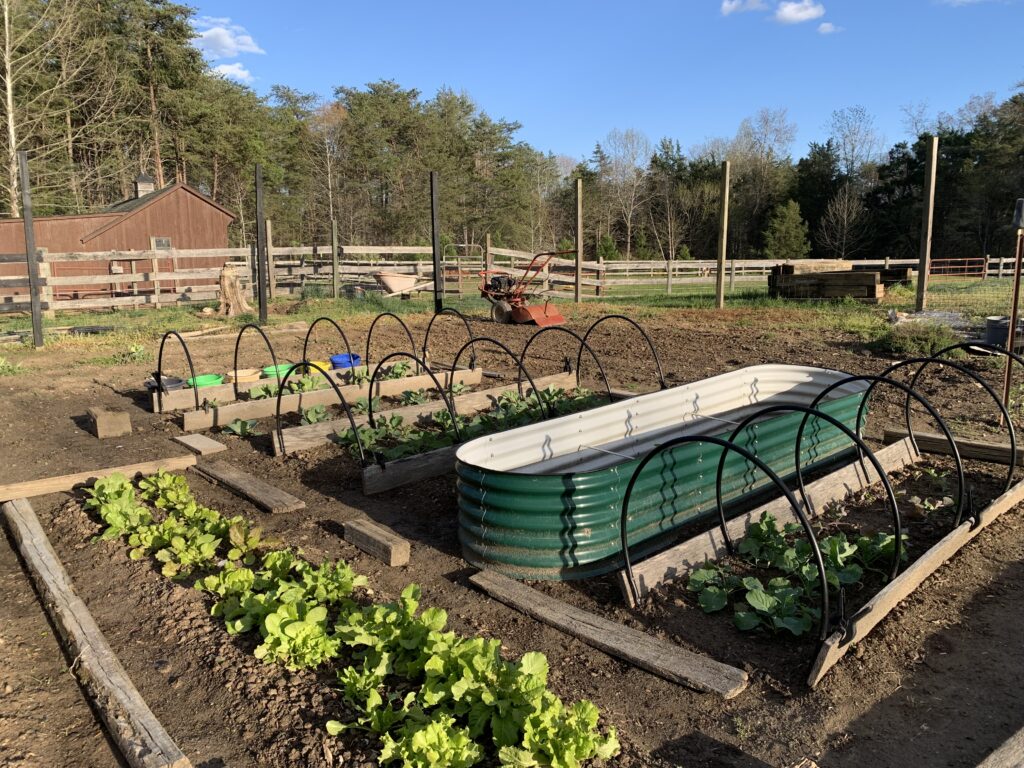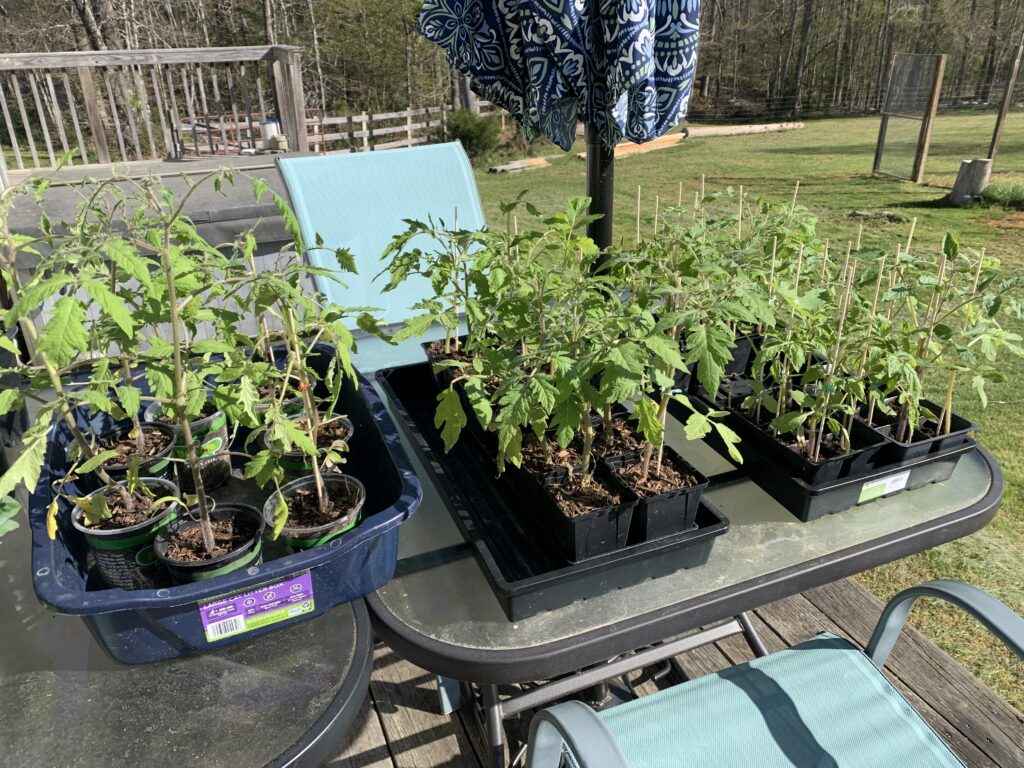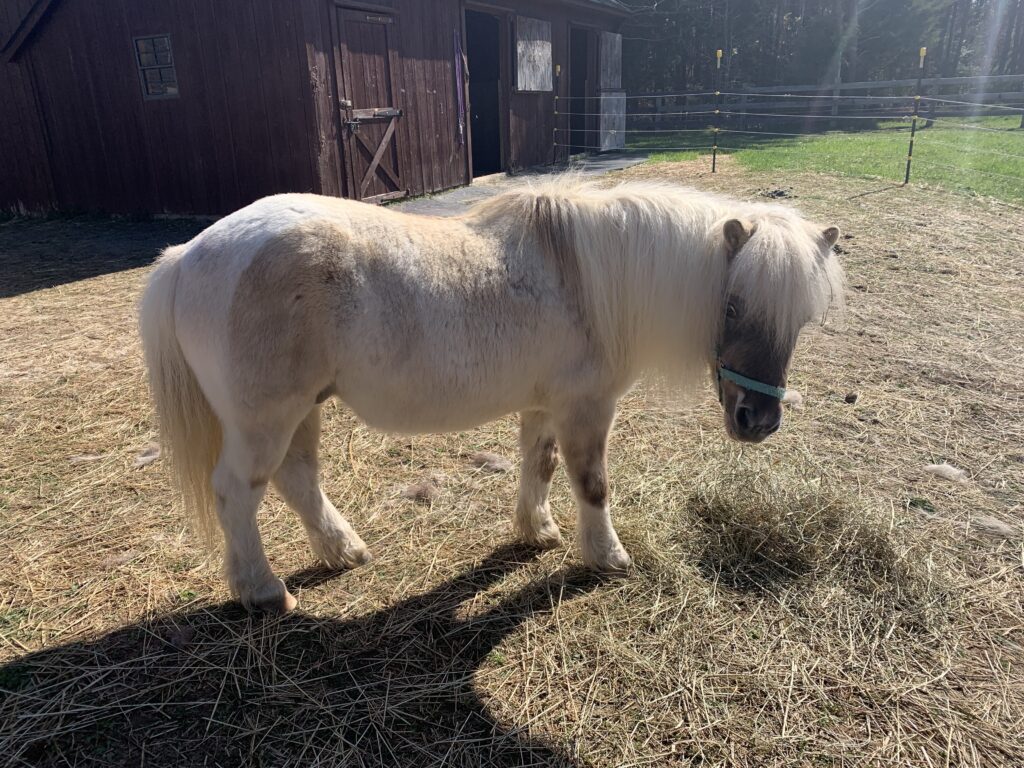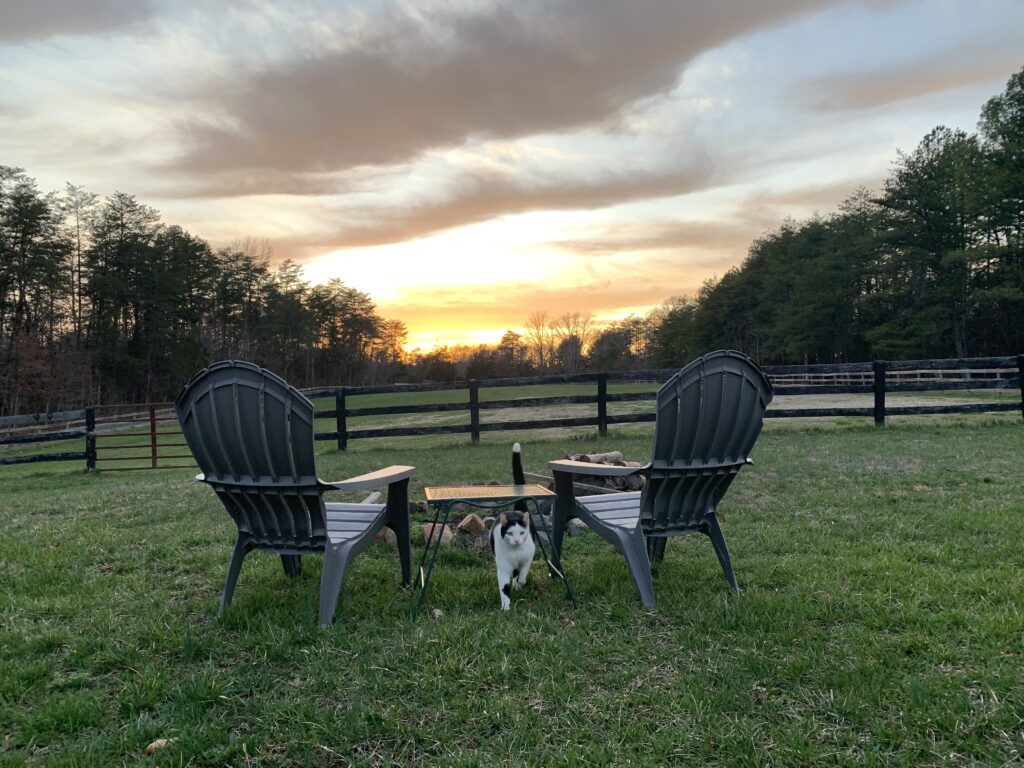Spring Has Sprung
With the warmer days and shorter nights, everything is beginning to awaken and bloom around the farm. From the flowering pear tree, daffodils and hyacinths in March, to the redbuds, tulips and dogwoods in April, the farm is full of spring color. The fruit trees and bushes are full of leaves and the fields and turnouts are popping with bright green grass. Here at Care-A-Lot Farm, beauty is all around us!
Spring Grasses
As Miniature horse owners, we are closely monitoring the grasses and how much turnout time our minis spend grazing on the tender green grass. For some horses, especially minis, who are more prone to overeating or who may have a metabolic condition which could leave them more sensitive to the increased sugar content in the spring grass, we know we need to be especially mindful and watchful for early signs of hoof tenderness which could be an indicator that the horse is ingesting too much and is in need of a modified turnout. Other early signs include an increased digital pulse, more frequent shifting of weight and increased time laying down due to hoof tenderness.
Sugar Content in Grasses
In the springtime with the warmer days and cooler nights, many grasses tend to have a higher sugar content which can pose a dietary problem for horses that are obese or who may have a metabolic condition which affects their body’s insulin production. These are the horses who are most at risk of founder and laminitis due to the increased sugar content being produced within the plant this time of year. Owners will want to continue to be vigilant with these same horses in the fall when temperatures and sugar content in the grasses can closely resemble the springtime.
Restrictions for Sensitive Horses
A horse that has foundered in the past, is obese, or that has Equine Metabolic Syndrome or Cushing’s Disease, will often do best on a restricted grazing schedule or in a dry lot turnout. The degree of this modification will be dependent upon the severity of their sensitivity and their specific metabolic needs. Some horses only require such restrictions in the spring and fall when the sugar content is the highest, but others who are more sensitive could require a complete dry lot without any grass year round. If this is the case, it is important to consult with your veterinarian on the best way to supplement and feed your horse.
Monitoring Our Minis
As we journey through this first year with our minis, we are watching all of them very closely for any signs of discomfort or changes in gait. We are pleased to report that all of them are in good weight and that none of them are obese, but we are still remaining vigilant incase any of them have an underlying health condition that could make them more sensitive to the sugars and thus more susceptible to founder. We are also keeping a close eye on the spring grass as it continues to comes in, and we are mindful about how long the horses graze on the lushest turnouts.
New Arrivals
In early March, we welcomed two new minis onto the farm. Both Clover and Snuggles arrived on the same weekend and came to us on loan from two different friends. It was wonderful having them arrive on the farm so close together, because it allowed the two of them to get to know each other before we began integrating them into the herd. Having previously been together, the two of them remained close and were good companions. The whole introduction process went smoothly and within a few short days, we had five minis coexisting peacefully together. Our older mare, Sweetheart, remained the alfa, and our two young geldings, Shenanigans and Rockstar, were happy to have young Snuggles to play with. Clover who was a bit older, preferred the quieter life although he and Snuggles remained good friends and often grazed together.
Because Clover had previously foundered severely in the past, we knew that we needed to be especially careful with the amount of grass he ingested. This is why we created him a semi-dry lot within our barnyard. This was not a true dry lot as there was still a minimal amount of grass in the barnyard, but this was a first step at limiting his daytime grazing. This early modification worked well and he remained healthy and comfortable.
After a few short weeks of keeping Clover in the semi-dry lot for much of the day and turning him out with the others at night, we began to feel a growing concern about the amount of grass that continued to pop up in his lot. It had been our hope that he would have been able to eat the grass down to nothing but dirt and thus creating a true dry lot, but the resiliency of the spring grass won out. Although he remained comfortable and showed no signs of hoof tenderness, our growing concern for his future health and our inability to create a true dry lot left us feeling that our farm was perhaps not quiet set up to meet his metabolic needs. We ultimately decided that it would be in his best interest to return home where we knew his owners were fully equipped to meet his specific needs. It was hard to see him leave, but we were comforted knowing that we did right by him, and we will always think fondly of the few short weeks he resided with us and our minis here at Care-A-Lot Farm.
Time to Garden
Over the past several months we have been steadily working on preparing our vegetable garden for the 2025 planting season. We first began by repairing the garden fence and reinforcing the deer netting. We then added compost and manure, and tilled several times.
In late February, we planted our sugar snap peas which were our first crop of the year to go into the ground, followed by our potatoes in mid March. By the end of March we had planted a variety of cabbages, brussels sprouts, broccoli, cauliflower and lettuce which had all been started indoors from seed.
Living in VA, we continue to have the occasional frost this time of year which requires us to cover our tender plants with hoops, buckets and garden cloth in order to provide warmth and frost protection. So far, we are pleased to report that everything is faring well. Hopefully our last hard frost for the year is behind us.
By the middle of April we plan to transplant our tomatoes into the garden. Our peppers and eggplants which have also been started from seed will follow shortly once they are a little hardier. Eventually, we will plant our squash, zucchini, green beans, okra, cucumbers and pumpkins + gourds. These later plants will need to wait a few more weeks until all danger of frost has passed. This will likely be in early to mid May. We tend to plant these crops directly from seed into the garden although we are considering starting a few squash and zucchini indoors to give them a head start.
Fruit Trees, Bushes and Vines
Here at the farm we have also been working to cultivate a nice variety of fruit plants. We currently have apple trees, a fig tree, thornless blackberries, blueberry bushes and a nice stand of young grape vines. However, due to the hearty resident deer population in our area, we have had to erect substantial deer fencing around all of our fruit and garden plants, but now that this is complete, the plants can grow and flourish and will hopefully some day become prolific producers.
Sharing is Caring
At Care-A-Lot Farm we look forward to not only sharing our minis with other horse lovers and equine enthusiasts, but we also look forward to sharing the bounty from our garden with our friends and family. And don’t forget, we enjoy sharing all of our experiences with you! We sincerely hope you continue to follow us as we journey through the year!!!




